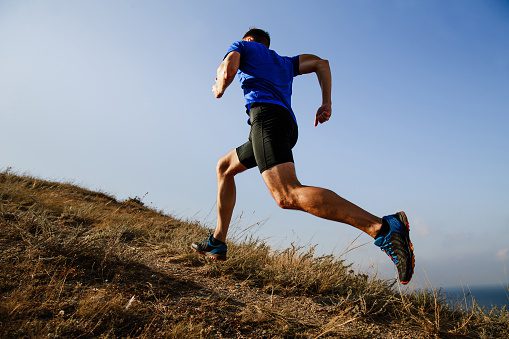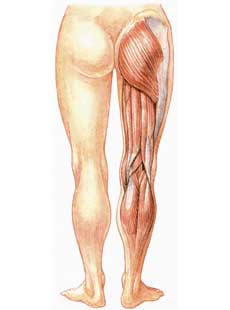Why you should take care of your hamstrings
They provide power to your stride so you can accelerate, push up hills and sprint to the finish line

Runners’ feet, knees and hips are well-known injury-prone areas of the body, but weak hamstrings can take you out of the game just as quickly. Your hamstrings play an important role in your running performance, and taking care of them will not only prevent injuries, but it will also make you a stronger, faster runner.

RELATED: What runners need to know about hip injuries
Why are your hamstrings important?
Your hamstrings work in conjunction with your quads and are responsible for flexing the knee and extending the hip at the beginning of each step you take. While your quads help push you forward, your hamstrings are there to pull your body back over your leg. If this balance gets thrown off, hamstring pain could be the result. There are two main reasons this could happen, including quad dominance and glute inactivity.
Some runners develop over-active quads, and these big muscles in the front of their legs end up doing all the work. Eventually, since your hamstrings aren’t being asked to do anything, they become inactive, creating an imbalance of power in your legs. This asymmetry can lead to a variety of issues, including knee pain, calf cramps and hamstring pain. Another factor contributing to quad dominance is your lifestyle, and how much sitting you do throughout the day. Many of us work desk jobs that involve sitting for several hours at a time, and because the hamstrings originate at the sit bones, they are stretched when you’re in the seated position. Long periods of sitting, then, can cause them to become over-stretched and negatively affect their function.
Your glutes are also heavily involved in running, and you often hear people referring to these giant muscles as your engine. They provide a lot of strength and power to runners, especially when you’re accelerating or running up a hill. Sometimes, your glutes can become inactive (again, this often a product of too much sitting), forcing your hamstrings to do all the work. This can cause them to tire quickly, which can eventually lead to pain. It can also force you to change your running mechanics, which can lead to injuries elsewhere in your body.

How to take care of your hamstrings
The best thing you can do for your hamstrings is to include a couple of strength training sessions in your training program every week that focus on exercises for the muscles in your posterior chain. Of course, the primary muscles of concern are your hamstrings, but you also want to target your glutes as well. Check back tomorrow for a series of exercises to strengthen the muscles in your posterior chain.
Stretching is also an important step in taking care of your hamstrings. If you are quad-dominant, you can start by stretching quads. You can also stretch your hamstrings if they’re tight, but it’s important to do so carefully, because many runners make the mistake of over-stretching this muscle. As a runner, you do want to carry some tension in your hamstrings, and too much stretching could negatively affect your running performance.
If you do end up with a hamstring injury, the best thing you can do is take some time off running to allow the injury to heal. Ideally, you should go see a physiotherapist, who can determine what caused your injury in the first place and develop a rehab routine to restore strength and function to the muscle, so you can get back out running soon.
RELATED: Rehab myths busted: how to (properly) recover from running injuries


